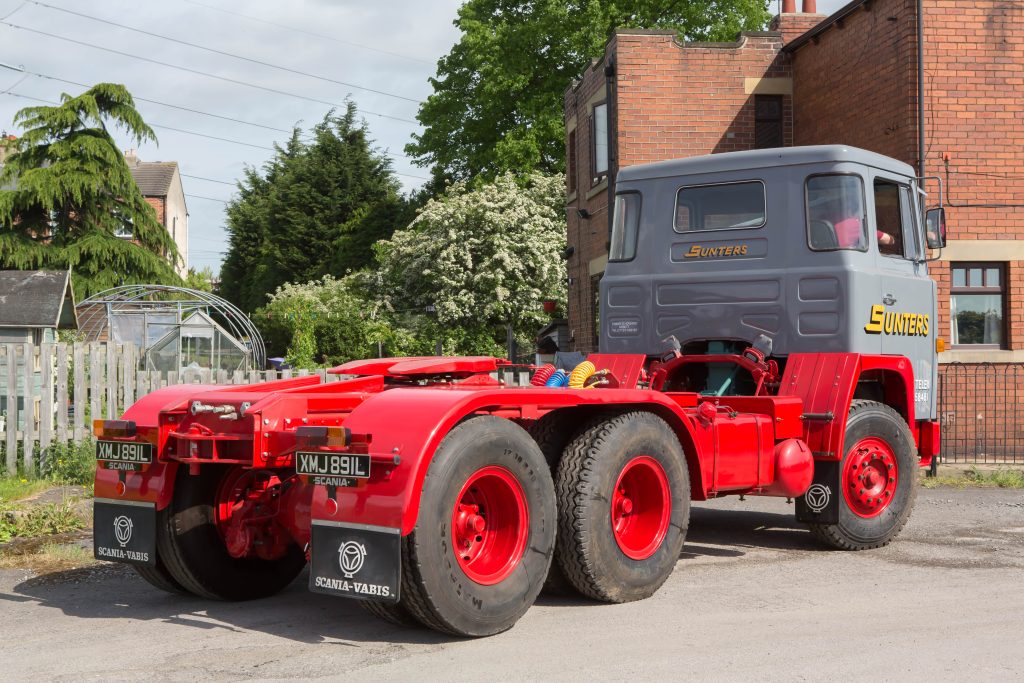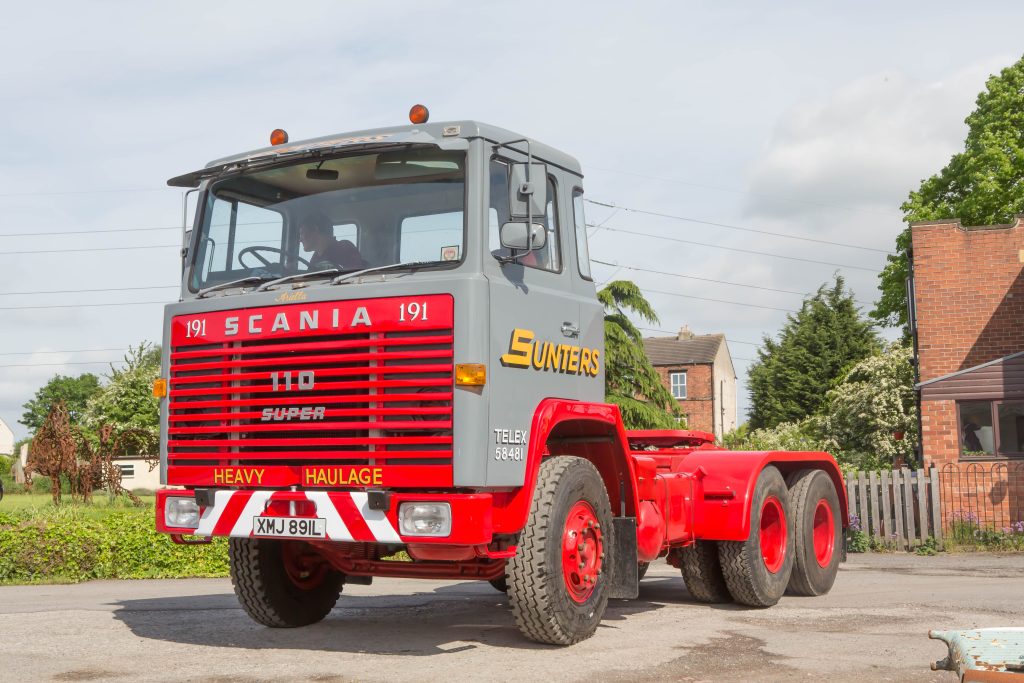
Simon Howard’s newly restored Scania 110 replicates a vehicle operated by legendary heavy haulage company Sunters. David Reed tells the story.
I have to admit to a personal interest in the heavy haulage firm of Sunters. They were based in Northallerton for many years, where I was born. From my childhood can remember Sunters’ vehicles slowly negotiating the High Street with their enormous loads. A few of their vehicles have made it into preservation. So when I heard about Simon Howard’s superb Scania 110 6×4 tractor unit, I had to have a look.
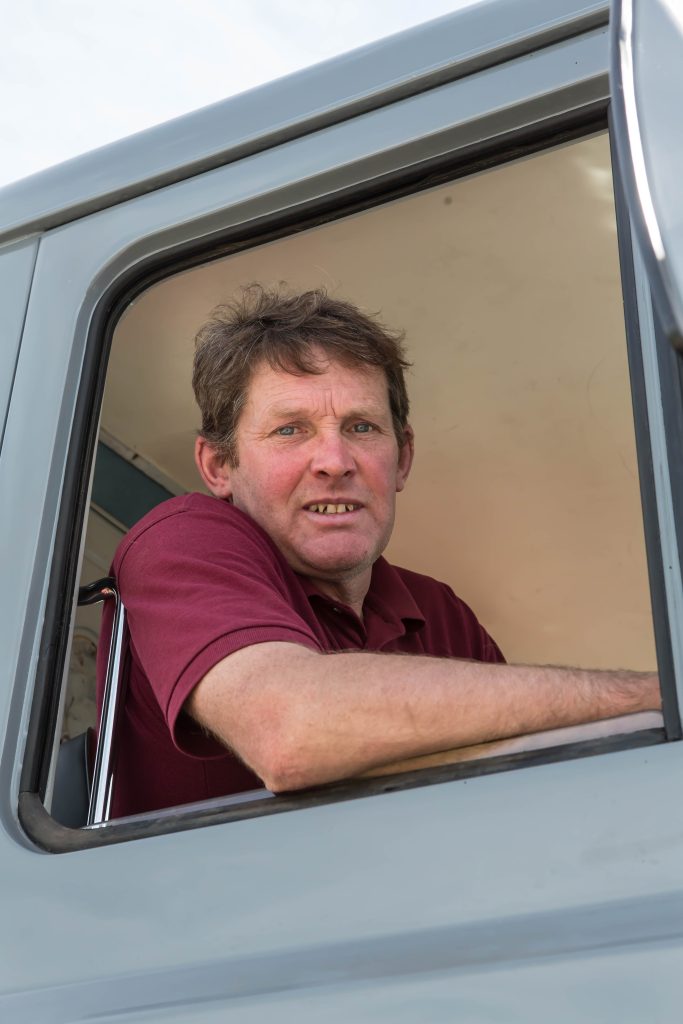
This particular Scania 110 was never part of the Sunters’ fleet. However it replicates day cabbed 110 6x4s DPY185L and OAJ288M that were. Simon’s Scania 110 is registered XMJ 891L and was ordered on October 17 1970 by Les Searle & Son of Horsham.
Searle, however, refused to accept the Scania 110 as it was, they said, already rusty. It remained unsold for some time but was bought eventually by Biggs Wall, a civil engineering and drainage company based in Arlesey, Bedfordshire. There, it was painted in their yellow and white livery. It was first registered XMJ89L on September 11 1972 as XMJ891L, and was probably used with a low loader to transport heavy equipment around.
Seven years later, it moved again. This time to Nissan dealers J S Holmes of Wisbech St Mary. Here it was converted to a recovery vehicle. “It was converted, possibly, by Wreckers International,” Simon said. And there it stayed. The Scania 110’s last MoT was in 1994, while the recovery gear was last tested on October 17 1998.
Always wanted one
XMJ was eventually parked up in a corner of Holmes’ yard and there it remained until it came to the attention of Simon Howard. “I passed my test on a Scania 141 so I always wanted to own one.”
Simon continued: “I was talking to a friend who had found out about the recovery that was sat in J S Holmes’ yard. ” “Despite having never been advertised, the Scania 110 had been on the market for some time, with people only knowing about it through word of mouth.”
It sounded just what Simon wanted. “I just had to go and have a look at it,” he admitted. “And to be honest, it looked better than it actually was, but I just fell in love with it.” A deal was done in November 2003 with Simon collecting the Scania with a friend’s low loader shortly afterwards.
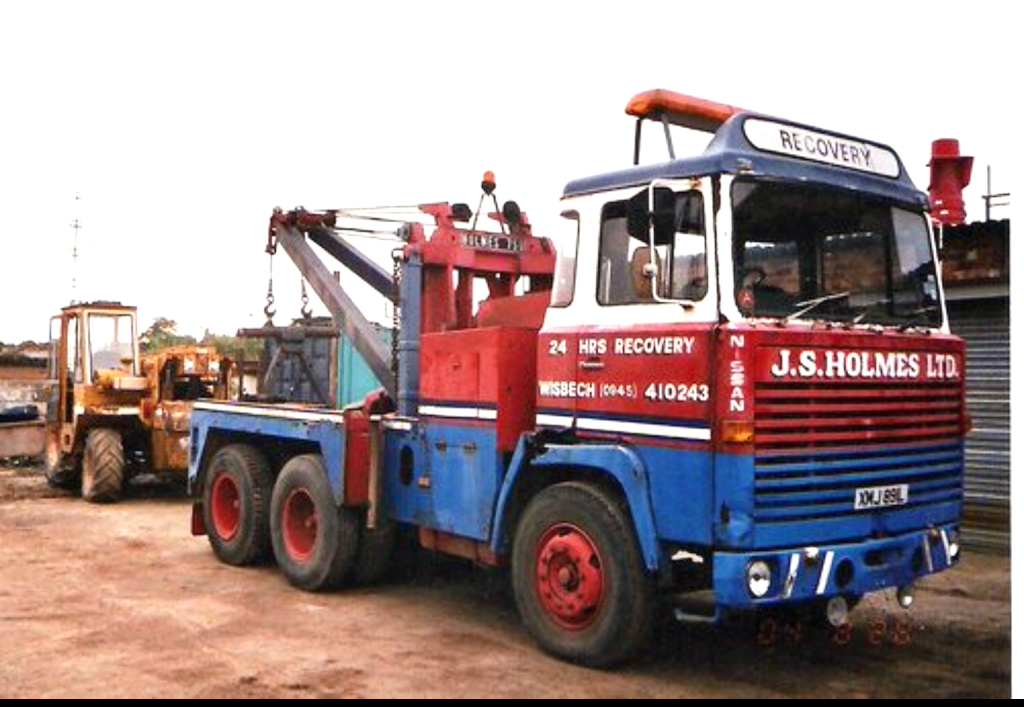
On arrival at Simon’s base, work started almost straightaway, although it had not yet been decided to replicate a Sunter’s vehicle. “I wanted to restore it as a tractor unit, so the recovery gear was removed within a couple of weeks,” Simon confirmed. Within a month the cab was removed to gain access to the engine and gearbox.
Started with the cab
Restoration then started on the cab. “I did some work to it, then left it for a while,” Simon explained, “Then went back to it to do some more.”
A visit to the Great Dorset Steam Fair prompted a change. “I saw Tony Eaton’s excellent book Sunters: High, Wide and Mighty.” Simon explained, “I read it from cover to cover.” Looking at some of the pictures in the book, Simon realised that Sunters operated a couple of day cabbed Scania 110s like his. “I had always known about the firm and decided to paint my Scania 110 in their grey and red livery.” Simon knew that nobody else had restored one like it.“I couldn’t get one of the original Sunters Scanias d, so this was going to be the next best thing.”
The Sunters Story
The history of Sunters themselves begins not in Northallerton, but in the Swaledale village of Gunnerside and with a George Sunter. George initially worked for the Sir Francis Lead Mines. His job that included leading a twin horse-drawn cart with a load of lead to the east coast at Redcarm a two-day journey in each direction. He was also a farmer. With the demise of the lead mines in the 1920s, set about buying and selling calves.
George and his wife Alice had ten children. Their first son, Tom, born in 1900, found employment with the Army Canteen Corps where he learned to drive. On leaving the army, he became a driver with a Lanchashire transport firm, before returning to Yorkshire. There, he worked as a bus driver for George Metcalfe of Reeth for a couple of years. Then, Tom spotted an opportunity. He bought a LHD Model T Ford, which could be converted into a pick-up truck, to transport sheep and cattle to markets in Wensleydale. Tom also used the car to carry tourists around the area. With the help of brothers, Len and Joseph, he continued to deliver livestock and goods items for the next five years. Sunter Brothers Haulage had begun.
Timber Transport
The timber industry was widespread locally, and Tom son gained a contract to transport felled trees. Moving the timber with horses was slow and difficult, so in 1931 the brothers bought a Chevrolet lorry. Further Chevrolets subsequently joined the fleet with interchangeable bodies. Sunter Brothers became a Limited Company in 1935. Although timber remained the mainstay of their work, the brothers continued to transport all kinds of goods. Around this time an Albion and a Leyland with an articulated pole trailer joined the fleet.
As the business grew, a new base was needed with good links to the major trunk roads of the time. The site chosen was at Northallerton, and by mid-1937, the move had been completed.
In 1938, a Scammell articulated pole tractor arrived, followed by a Gardner engine ERF rigid, registered EPY432. During WW2, Sunters continued transporting timber, but the war effort needed lots of steel, and Sunters transported steel sections for ship’s hulls and keels and aircraft fuselage parts.
Wartime Work
When the war ended, things began to get back to normal. Despite diversifying into coach operations, road haulage continued to dominate. But nationalisation was on the horizon. So like most haulage contractors, Sunters became part of by BRS.
The government paid Sunters £130,000 compensation and they decided to move into heavy haulage. THey bought new vehicles including included Meadows-engined 4×4 Scammell Mountaineer KVN604, 6×4 Foden tractor unit PPY264 and Scammell Constructor 6×6 NAJ920. They also had Atkinsons, AECs, Guys and Leylands, and after Sunters bought Crook & Willington of Bishop Auckland in 1957, two Diamond Ts joined the firm.
Also in 1957, Sunters won a contract to transport twelve heat exchange units from the Head-Wrightson Heavy Construction Company to the new Bradwell nuclear power station. They boought two 100-ton crane bogies, although Sunters did not have the vehicles that would be capable of moving such a heavy load. So they hired-in three newly designed and built Rotinof Atlantics. Impressed with the Atlantics performance during the move, Sunters bought one, the only heavy haulage firm to do so.
United Transport
In 1960, Peter Sunter joined the firm, and soon found himself at the heart of the business. Tom died in 1963, brother Joseph having passed on in 1957.In the end, the family decided to sell the business to United Transport. United were also in the process of buying Wynn’s Heavy Haulage. Wynn’s and Sunters’ retained their individual names and liveries, with nothing really changing internally.
Life continued into the 1970s, with Peter managing the Northallerton operation after Les retired. He continued to acquire new vehicles for the fleet, including several Scania 110s and KVN680E, a 1967 Scammell Super Constructor, while the aging Rotinof Atlantic was accepted by the Science Museum. Other new vehicles included Mercedes Titan VVN910S. The oldest Contractor was given a new cab and engine rebuild, and re-registered YVN308T. New trailers with a 1000-tons configuration arrived. These were used with Rigging International on Teesside. Contract work moving oil rig modules on site became commonplace. Other contracts following, some on the continent in the Middle East at Dubai and on the Persian Gulf.
By the 1980s however, the Northallerton base was becoming too remote. In 1986, Wynns, Wrekin Roadways and Econofreight all merged into Econofreight United Transport. The depot in Northallerton became a housing estate, and the vehicles were all painted blue and white. It was the end of an era.
Back in the cab
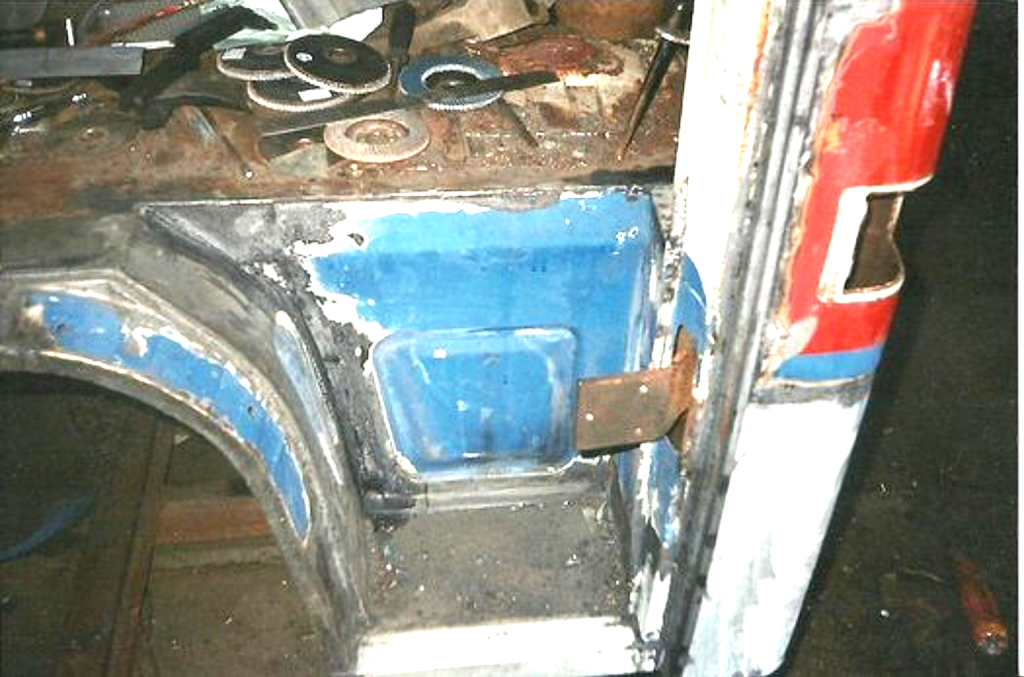
Back with Simon’s Scania 110, Simon started with the cab. He then looked at the engine/gearbox, followed by the chassis. Finally, he returned to the cab, which turned out to be the most complicated part of the whole job.

“When the glass-fibre nameboard was removed, it took the cab roof off with it,” Simon explained. “The nameboard had collected rainwater and as the cab roof had not been painted underneath it, water had got in.” The damage went down the corner panels and rotted them, as well as getting inside the door panels. “When I opened the driver’s door, the floor and the wing were not connected to the rest.”
Self welded
Simon tackled the cab in two parts, and did all the welding himself. The driver’s side came first, starting with the floor. “I concentrated on the area around the driver’s seat, and later worked around the bottom six inches.” The cab bottom was very bad. “I had to renew the steps and all around the steering column. I cut all the front corners off.
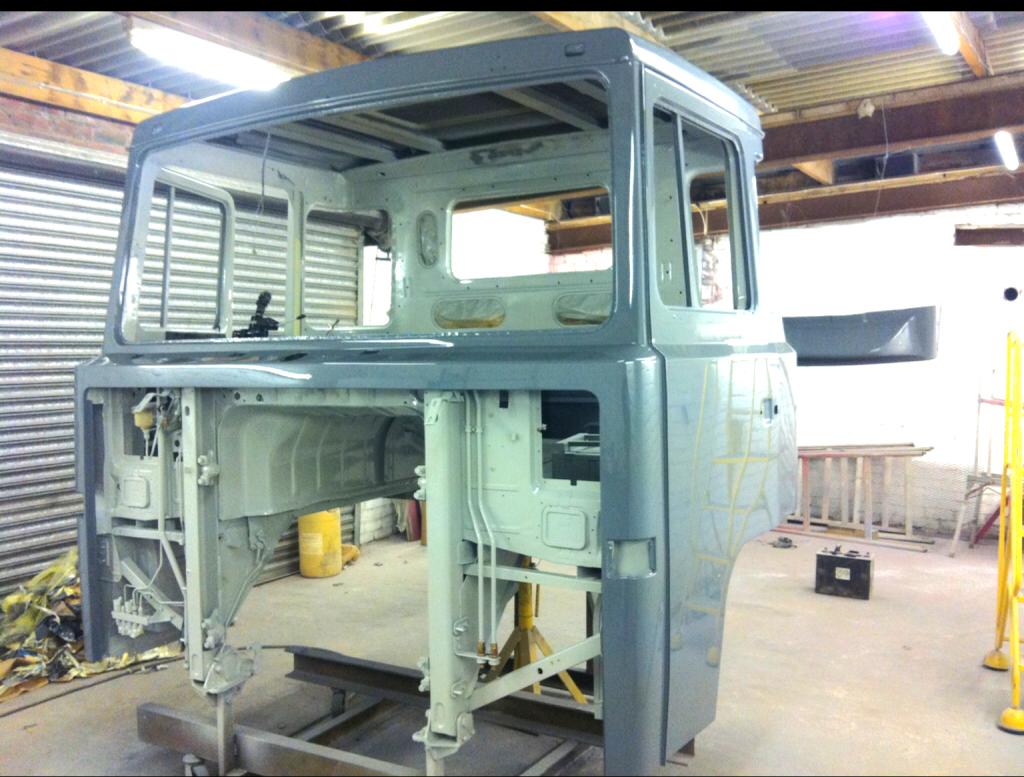
The nearside was even worse. “That side had been repaired using a lot of filler so when I took the side off, there was nothing left.” The windscreen surround is all-new with metalwork fabricated by Simon.
Simon had a stroke of luck when it came to doors. “I saw some on eBay at a breaker’s yard in Sheffield. So I put in a bid for them.” But the luck didn’t stop there. “I bought them for £10. Although I had to replace the bottoms they were basically okay.”
Once it was completed, Simon put the cab into storage for six years and moved on to other parts.
The engine
The engine was in much better condition than the cab, although some work was still needed.Specifically, a cylinder head was refurbished and the injectors were “looked at”.
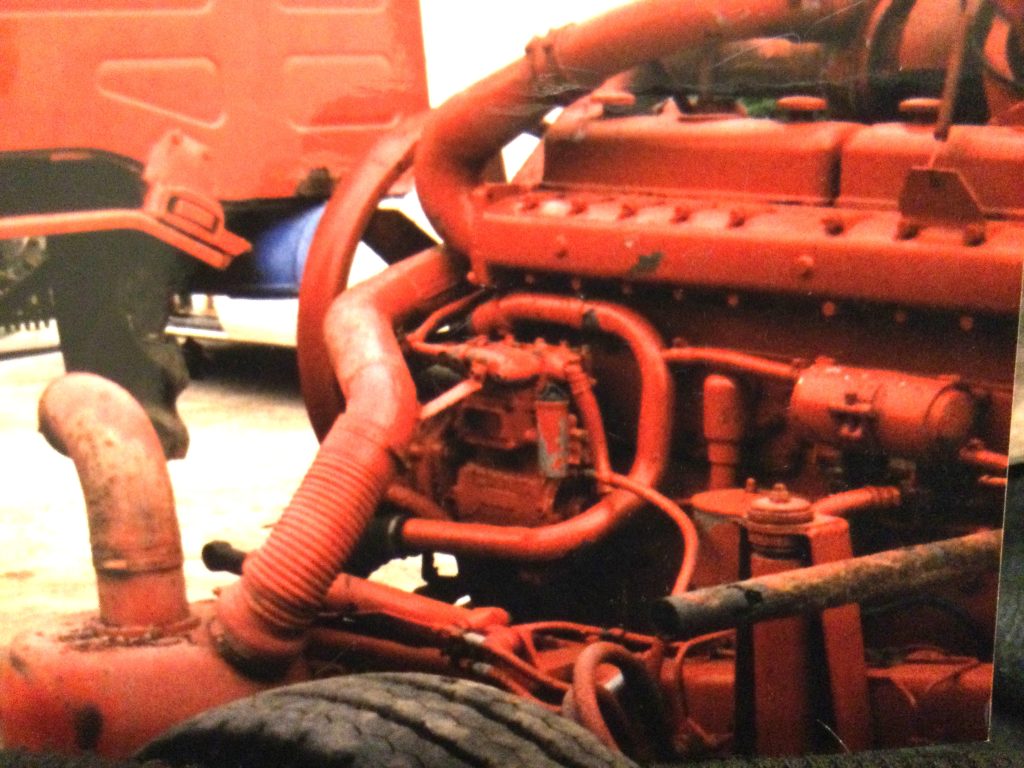
Everything was cleaned, inspected and re-sealed with new components being fitted only as required, “I replaced the oil seals and some bearings in the gearbox, while the clutch was cleaned and re-sealed,” Simon added. “I repaired as much as I could, there is no need to replace what can be refurbished.”
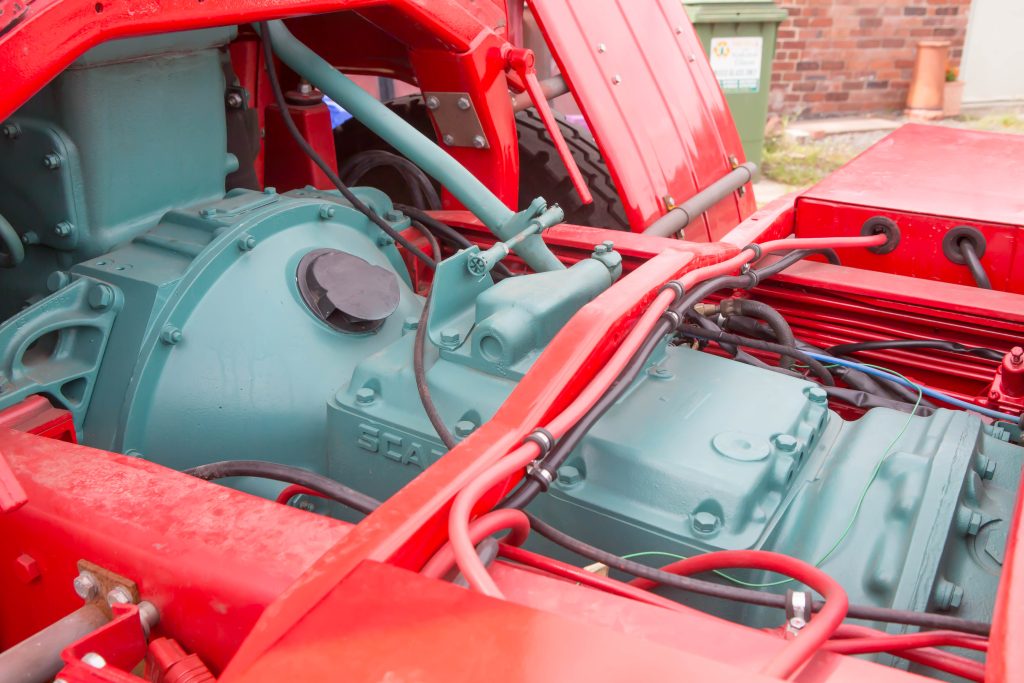
As usual, extensive electrical work was required. “All the lights are new, the chassis was completely re-wired while the wiring in the cab was repaired.” All of the lights had been earthed through the cab body, but as that was rotten it had become dangerous. Simon made sure that everything came to a common earth at a central point.
The chassis
The chassis needed unexpected and rather unusual repair. “It had a heavy-duty chassis which was double-flitched. It had rusted between the chassis rails which had bowed them out.” Consequently, Simon stripped the chassis down to the rails. He then started to straighten them, using a mini-excavator and a forklift. “I made a dolly and pulled it with the forklift six inches at a time until it was straight.”
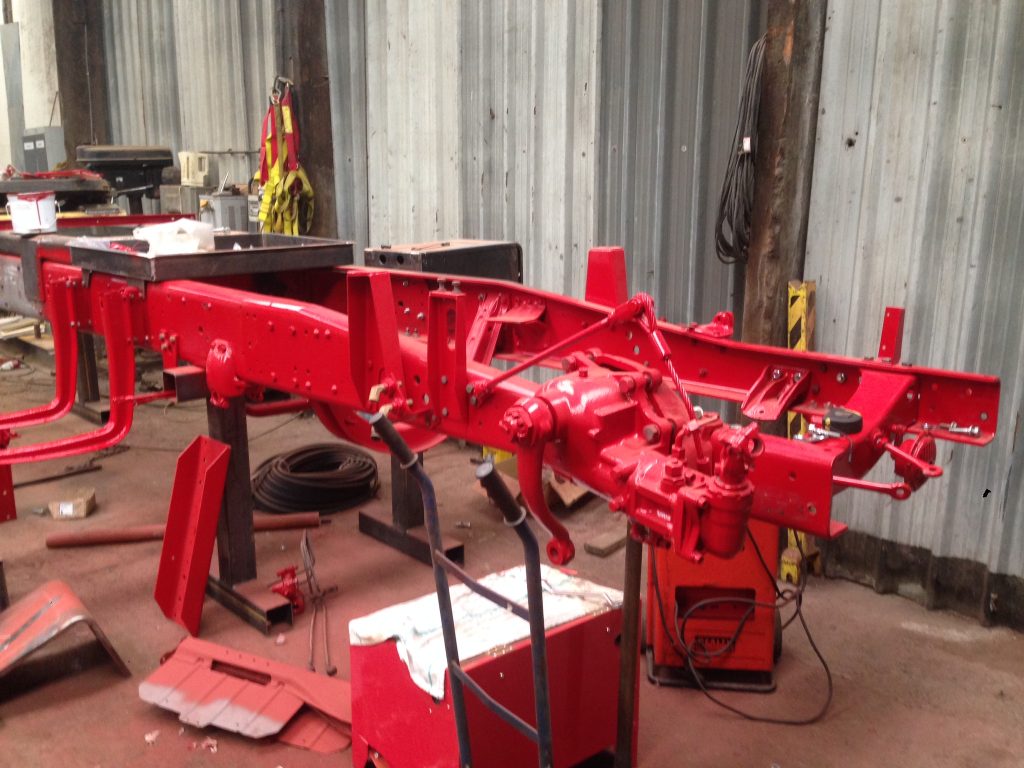
The chassis had also been shortened for recovery work. “I had to extend it by 12ins and fabricate the fifth-wheel mount and sub chassis from new.” The old crossmembers were also bent and damaged so they were renewed. The springs were sent away to be refurbished and then rebushed. Simon also removed, stripped down and renewed as required the air pipes. “I used imperial pipework, but it took a lot of effort to get hold of them.”
“I built a new battery box and lids, and got a second diesel tank and brackets from fellow heavy haulage enthusiast Dave Weedon.”
Tanks to move
This, though, led to another problem. “The air tank mountings had been moved to accommodate the recovery equipment, so I had to move it all back to where the brackets and tanks would have been originally,”
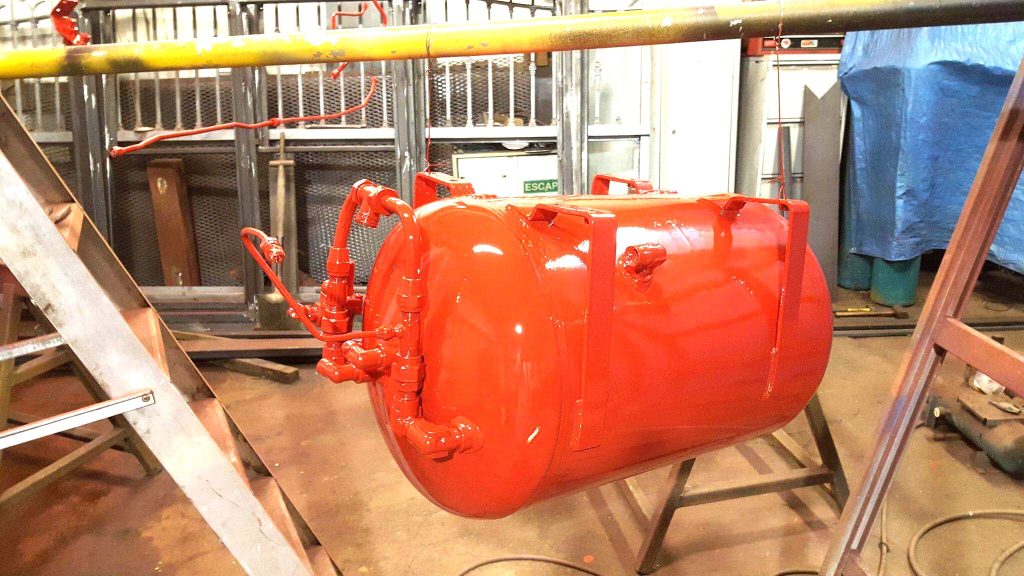
Simon spent a lot of time and effort getting all the details right. “I re-used as many original bolts as I could,” he explained. “New ones were fitted with a flat and spring washer and then a nut, just as when the Scania 110 was built. Simon recognises that working like this took longer. “But the end result was worth it – I wanted to get it right.”
To help with accuracy, Simon bought an original Scania brochure to see how the Scania would have looked, “I found the piping diagram and remade it exactly as the Scania was when new.”
Other work included stripping the axles and fitting new bearings and seals as required. Dunning & Fairbank of Leeds refurbished the propershafts, and fitted sall-new universal joints. The brakes were treated to new back plates, shoes and linings.
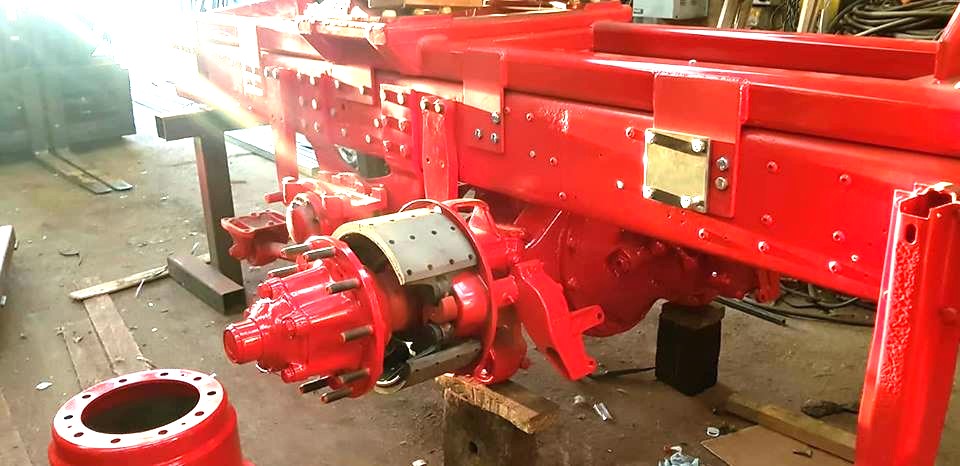
The brochure also helped Simon get the colour scheme correct. “I saw that it would have originally had a red chassis with green engine.” It also showed how the rear light brackets would have looked, enabling Simon to fabricate new ones as the originals were lost during the recovery conversion.
Retired help
When Simon found it impossible to obtain a set of original tandem rear wings, he contacted manufacturers Boydell & Jacks Ltd of Burnley who confirmed that that pattern was no longer manufactured. That didn’t put Simon off though. “After a few weeks I rang them again, and after some negotiation, it was agreed that a semi-retired employee who now worked as a caretaker would fabricate them for me in his spare time.” Simon was warned that this would be a long process, but it didn’t turn out that way, “I sent drawings and they were done in two weeks.”
A friend of Simon’s named Carl painted the cab, and Craig Ainge from Traditional Signwritingcopied lettering which was copied lettering from an original Sunter’s brochure. “We used the same design of lettering that Sunters’ vehicles were wearing in the early 1970s,” Simon added. And that was that, with the Scania being finished just in time for its appearance at the Scammell Gathering at Ackworth in May where it certainly got a lot of attention.
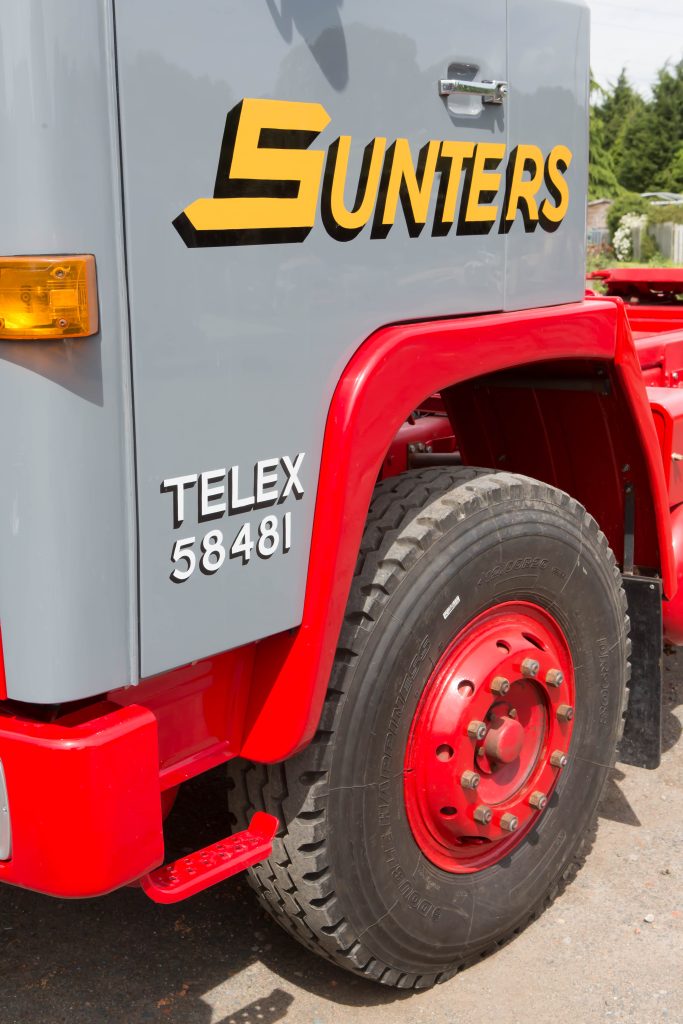
Simon started young
Simon’s interest in vehicles began as a young lad when he travelled with his lorry driving next door neighbour who delivered mining equipment. “I went all over with him,” Simon said.
He started work with Dermot Ogorman and went with another driver to load machines on to the trailer. “Although I was basically a fitter, I drove low loaders at the weekends, And then began driving other vehicles including a DAF 3300 with a King trailer.”
Before long, Simon was looking for a vehicle of his own. “Everybody had four-wheel vehicles so I wanted something different.” And what he bought was different, with KAX395P, one of Wynns Scammell Constructors that dated from 1976 and was named Renown. “I bought it along with my two-brothers and really got into heavy haulage from that moment.”
Simon’s interest has continued, with his Volvo FH12 being painted in Sunters’ red and grey livery. But Simon’s Scania 110 that has become the centre of attention. “I’ve restored it on and off since 2003. I reckon I actually spent around five years in total.”
The effort put in has certainly been worth it, replicating a vehicle that will back memories to those who saw Sunters’ vehicles on the road hauling heavy loads around the country. And as Simon continues to emphasise, the Scania 110 has been restored to as near original specification as possible.
To read more articles like this every month, subscribe to Classic & Vintage Commercials magazine by subscribing here. And find the latest news, exclusive looks and more at the CVC website here.
